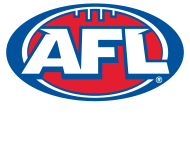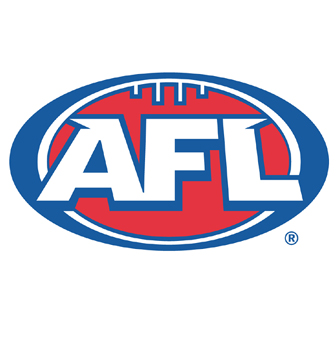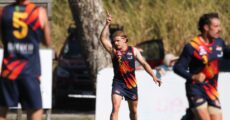There will be three interchange players and one substitute in the Toyota AFL premiership next year.
Monday, 4 October, 2010
There will be three interchange players and one substitute in the Toyota AFL premiership next year.
This follows confirmation by the AFL Commission of a series of recommendations from the Laws of the Game Committee.
The interchange/substitute variation, which is intended to limit at least somewhat the ever-escalating player rotations, was announced by the AFL today following an extensive period of consultation throughout 2010.
In an AFL media statement, AFL General Manager Football Operations Adrian Anderson, Chairman of the Laws of the Game Committee, said the Commission had approved the following:
1) An alteration to the interchange system, whereby AFL teams will have a bench comprised of three interchange players and one player to be used as a substitute;
2) A change to the Advantage Rule, whereby the player and not the umpire will decide if there is an advantage to a team in playing on after a free kick;
3) Simplify the rough conduct (bumping) rule and make consistent with head down over the ball, so that a player who elects to apply a bump in any situation is liable if he makes forceful contact with the head, unless:
a. the player was contesting the ball and did not have a realistic alternative way to contest the ball; or
b. the contact was caused by circumstances outside the control of the player which could not be reasonably foreseen.
The Laws Committee consists of Adrian Anderson (Chairman), Kevin Bartlett, Luke Darcy, Andrew McKay, Leigh Matthews, Matthew Pavlich, Luke Power, Rowan Sawers and Michael Sexton.
Mr Anderson said the AFL’s Laws of the Game Committee had recommended that a restriction should be applied to the use of the interchange, after closely monitoring the issue over the last four seasons.
In August, the Laws Committee sought club and public feedback on a range of options regarding the use of the interchange, as well as other Laws related topics. Further research was also conducted. The Committee recommended the restriction on interchange at its meeting last month, which was then endorsed by the AFL Executive and finally, as the last step in the Laws process, was formally ratified by the AFL Commission.
“The AFL has been closely monitoring the rising number of interchange rotations and their effect on the game for several seasons,” Mr Anderson said.
“Interchange numbers per club have doubled from an average of 58 per game in 2007, to 117 per game in 2010. In 2003, clubs were interchanging players at a rate of 22 per match, less than 20 per cent of current totals,” he said.
The three reasons for restricting the interchange are 1) congestion, 2) fairness; and 3) injuries. The Laws committee was concerned that, if left unchecked, further increases in the use of interchange would make the game more defensive and more congested.
“The use of interchange facilities defensive tactics and has created more congestion, more stoppages, more defensive pressure and has contributed to a drop in disposal efficiency,” he said.
“The Laws committee was also concerned about the increasing effect of the interchange on match fairness. The interchange was originally designed to help teams when they had an injury, but was increasingly a disadvantage to a team with an injury, because it was unable to rotate their players as much as the opposition,” Mr Anderson said.
“The medical advice was also telling us that the greatest risk was to do nothing at all, and that a restriction should be applied to try to arrest the current injury trend. We were also advised there would be an increased risk of high-intensity collision injuries without this change,” he said.
“Successful interventions in recent years have prevented collision injuries from becoming a problem but we were advised that this would not necessarily remain the case,” Mr Anderson said.
Under the substitute system, a club will not be required to demonstrate a player is injured and unable to finish the match. The club will be allowed to introduce a substitute at any time, on the provision that the replaced player cannot return to the game, as trialled in the 2009 and 2010 NAB Cup competitions.
Separately, Mr Anderson said the AFL had decided to introduce into the Premiership Season, the advantage rule trialled in this year’s pre-season NAB Cup competition, whereby the player not the umpire determines whether there is an advantage in playing on after a free kick.
The AFL has also simplified the rule on head high bumps. Any player who bumps an opponent in any situation is liable if he makes forceful contact with the head, unless there was no other way to contest the ball or the contact was beyond the control of the bumping player.
The Laws Committee did not recommend any change to the game’s scoring system, nor any change to the current methods of measuring the length of quarters





















































